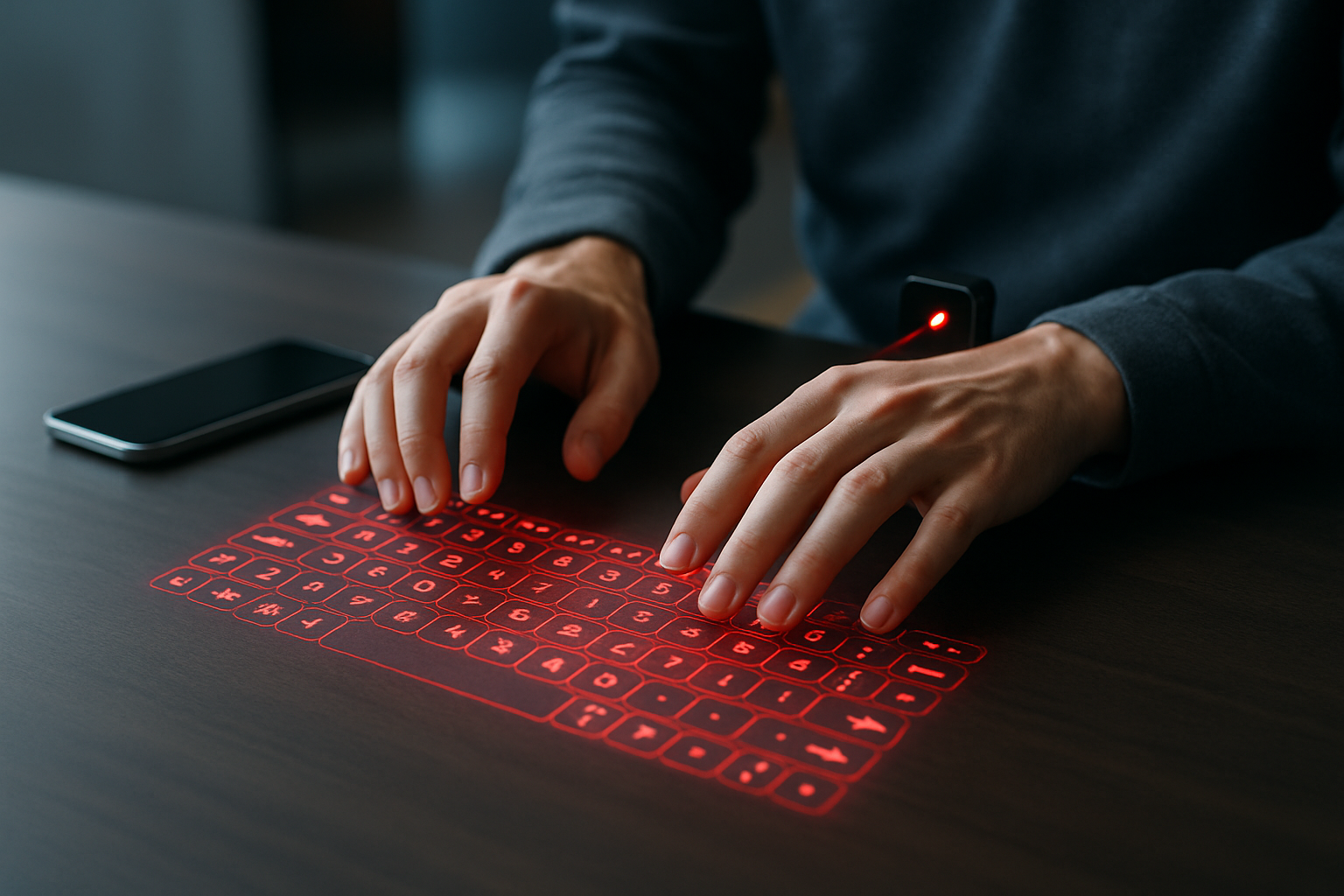Holographic Keyboards: The Next Frontier of Input Devices
In a world where technology continues to push boundaries, holographic keyboards are emerging as a futuristic solution to our typing needs. These ethereal input devices promise to revolutionize how we interact with our devices, offering a blend of sci-fi fantasy and cutting-edge innovation. As we delve into this exciting realm, we'll explore the current state of holographic keyboards, their potential applications, and the challenges they face in becoming mainstream.

How Holographic Keyboards Work
At their core, holographic keyboards utilize a combination of projection technology and motion sensing. A small projector emits a laser-generated image of a keyboard onto a flat surface. Simultaneously, an infrared light plane is projected just above the surface. When a user’s fingers break this plane, cameras or sensors detect the movement and translate it into keystrokes.
Current State of the Technology
While holographic keyboards are not yet commonplace, several companies have made significant strides in bringing this technology to market. Celluon, a South Korean tech firm, has been at the forefront with its Epic line of laser projection keyboards. These devices can connect to smartphones, tablets, and computers via Bluetooth, offering a portable typing solution.
Advantages of Holographic Keyboards
One of the most significant benefits of holographic keyboards is their portability. Without physical keys, these devices can be incredibly compact, making them ideal for on-the-go professionals or travelers. Additionally, the lack of moving parts means they’re less likely to suffer from mechanical failures or wear and tear.
Challenges and Limitations
Despite their futuristic appeal, holographic keyboards face several hurdles. The lack of tactile feedback can make typing less intuitive and potentially slower for users accustomed to physical keys. Accuracy can also be an issue, as the technology must precisely track finger movements in three-dimensional space. Environmental factors like ambient light can interfere with the projection and sensing mechanisms, limiting their use in certain settings.
Potential Applications Beyond Typing
While typing is the primary focus, holographic projection technology has potential applications beyond traditional keyboards. Virtual control panels for smart home devices, interactive museum exhibits, and even augmented reality interfaces could benefit from this technology. As the sensors become more sophisticated, we might see holographic input devices that can interpret complex gestures and movements.
The Road to Mainstream Adoption
For holographic keyboards to gain widespread acceptance, several improvements are necessary. Enhanced accuracy, better energy efficiency, and more robust performance in varied lighting conditions are crucial. Additionally, software integration and compatibility with major operating systems will play a significant role in their adoption.
Price Points and Market Positioning
Currently, holographic keyboard devices are positioned as niche products, with prices ranging from $100 to $200 for consumer models. As the technology matures and production scales up, we can expect these prices to decrease. However, for now, they remain a premium alternative to traditional keyboards and are marketed primarily to tech enthusiasts and early adopters.
The Future of Holographic Input
As we look to the future, the potential for holographic input devices extends far beyond simple keyboards. Researchers are exploring ways to create fully three-dimensional holographic interfaces that could revolutionize fields like medicine, engineering, and education. Imagine surgeons manipulating 3D holographic models during pre-operative planning or architects designing buildings by shaping holographic projections with their hands.
In conclusion, holographic keyboards represent an exciting step forward in human-computer interaction. While they still face challenges in becoming mainstream input devices, their potential to transform how we interact with technology is undeniable. As the technology continues to evolve, we may find ourselves typing on air sooner than we think, ushering in a new era of digital interaction that blurs the line between the physical and virtual worlds.





